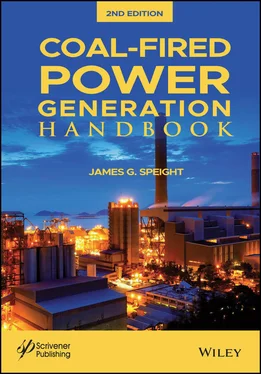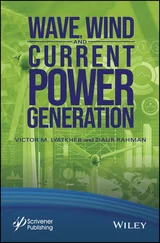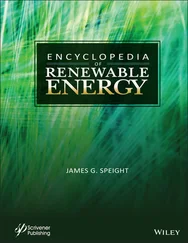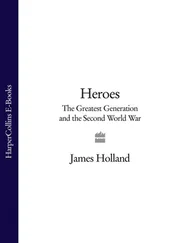The classification includes three groups of bituminous coals with moist calorific value from above 14,000 Btu/lb (32.5 MJ/kg) to above 13,000 Btu/lb (30.2 MJ/kg); three groups of subbituminous coals with moist calorific value below 13,000 Btu/lb to below 8,300 Btu/lb (19.3 MJ/ kg); and two groups of lignite coals with moist calorific value below 8,300 Btu/lb. The classification also differentiates between consolidated and unconsolidated lignite and between the weathering characteristics of subbituminous coals and lignite.
These test methods used for this classification system are (as already stated) based on proximate analysis and are (Luppens and Hoeft, 1992; Speight, 2013):
Heating value (calorific value), which is the energy released as heat when coal (or any other substance) undergoes complete combustion with oxygen. Moist calorific value is the calorific value of the coal when the coal contains the natural bed moisture (i.e., the moisture content of the coal in the seam prior to mining). The natural bed moisture is often determined as the equilibrium moisture under prescribed standard test method conditions ( Chapter 5). In addition, the agglomerating characteristics of coal are used to differentiate between certain adjacent groups.
Volatile matter, which is the portion of a coal sample which, when heated in the absence of air at prescribed conditions, is released as gases and volatile liquids.
Moisture, which is the water inherently contained within the coal and existing in the coal in the natural state in the seam. The moisture is determined as the amount of water released when a coal sample is heated at prescribed conditions but does not include any free water on the surface of the coal; such free water is removed by air-drying the coal sample being tested.
Ash yield, which is the inorganic residue remaining after a coal sample is completely burned and is largely composed of compounds of silica, aluminum, iron, calcium, magnesium and others. The ash may vary considerably from the mineral matter present in the coal (such as clay, quartz, pyrites and gypsum) before being burned.
Fixed carbon value, which is the remaining organic matter after the volatile matter and moisture have been released. It is typically calculated by subtracting from 100 the percentages of volatile matter, moisture and ash. It is composed primarily of carbon with lesser amounts of hydrogen, nitrogen and sulfur. It is often simply described as a coke-like residue. The value is calculated by subtracting moisture, volatile matter, and ash from 100% ( Chapter 5).
This system of classification, in fact, indicates the degree of coalification as determined by these methods of proximate; analysis with lignite being classed as low-rank coal; the converse applies to anthracite. Thus, coal rank increases with the amount of fixed carbon but decreases with the amount of moisture and volatile matter. It is, perhaps, easy to understand why coal rank is often (and incorrectly) equated to changes in the proportion of elemental carbon in coal (ultimate analysis; Chapter 5).
It is true, of course, that anthracite typically contains more carbon than bituminous coal which, in turn, usually contains more carbon than subbituminous coal, and so on. Nevertheless, the distinctions between the proportions of elemental carbon in the various coals are not so well defined as for the fixed carbon and extreme caution is advised in attempting to equate coal rank with the proportion of elemental carbon in the coal.
There have been criticisms of this method of classification because of the variability of the natural bed moisture and the numbering system for the classes of coal. With regard to the natural bed moisture, the fact that it may vary over extremely wide limits has been cited as a distinct disadvantage to using this particular property as a means of classifying coal. In fact, the natural bed moisture is determined under a set of prescribed, and rigorously standardized, conditions, thereby making every attempt to offset any large variability in the natural bed moisture. With regard to the numbering system, it has been indicated that the class numbering system should be reversed so that a high number would indicate a high rank.
Nevertheless, in spite of these criticisms, the method has survived and has been generally adopted for use throughout North America as the predominant method of classification (Speight, 2013 and references cited therein).
Thus, the rank of a coal indicates the progressive changes in carbon, volatile matter, and probably ash and sulfur that take place as coalification progresses from the lower-rank lignite through the higher ranks of sub-bituminous, high-volatile bituminous, low- volatile bituminous, and anthracite. The rank of a coal should not be confused with the grade of the coal ( Table 2.6). A high rank (e.g., anthracite) represents coal from a deposit that has undergone the greatest degree of metamorphosis and contains minimal amounts of mineral matter (reflected as mineral ash in the combustion test) and moisture. On the other hand, any rank of coal, when cleaned of impurities through coal preparation will be of a higher grade.
The use of coal as an essential fuel in Britain from the time of the Industrial Revolution has led to the development of a system of classification in which code numbers are used to denote the different types of coal. The coal survey system (developed by the National Coal Board of the United Kingdom) is based on the coke-forming characteristics of the various coals as well as on the types of coke produced by a standard of coking test (the Gray-King carbonization assay). The system also employs the amount of volatile matter produced thermally by the various types of coal ( Table 2.7). In this classification system, a three-figure code number is used to describe each particular coal ( Table 2.7) – the lower numbers are assigned to the higher rank coal, i.e., anthracite. However, because of the various divisions of this particular system, such approximations have to be made with extreme caution and with extremely careful cross-checking.
Although the English system does appear to have some merit because of the dependence on two simple physical parameters (i.e., the volatile matter content of the coal and the Gray-King carbonization assay), there are, nevertheless, disadvantages to the method, not the least of which is the susceptibility of the Gray-King assay data to oxidation (weathering) of the coal and, apparently, the time required to conduct the assay.
Table 2.6 Differentiation of coal rank, coal type, and coal grade.
| Rank |
| Indicative of the degree of metamorphism (or coalification) to which the original mass of plant debris (peat) has been subjected during its burial history. |
| Dependent on the maximum temperature to which the proto-coal has been exposed and the time it has been held at that temperature. |
| Also reflects the depth of burial and the geothermal gradient prevailing at the time of coalification in the basin concerned. |
| Type |
| Indicative of the nature of the plant debris ( proto-coal ) from which the coal was derived, including the mixture of plant components (wood, leaves, algae) involved and the degree of degradation before burial. |
| The individual plant components occurring in coal, and in some cases fragments or other materials derived from them, are referred to as macerals . |
| The kind and distribution of the various macerals are the starting point for most coal petrology studies. |
| Grade |
| Indicative of the extent to which the accumulation of plant debris has been kept free of contamination by inorganic material (mineral matter), before burial (i.e., during peat accumulation), after burial, and during coalification. |
| A high-grade coal is coal, regardless of its rank or type, with a low overall content of mineral matter. |
2.3.5 International System
Читать дальше












